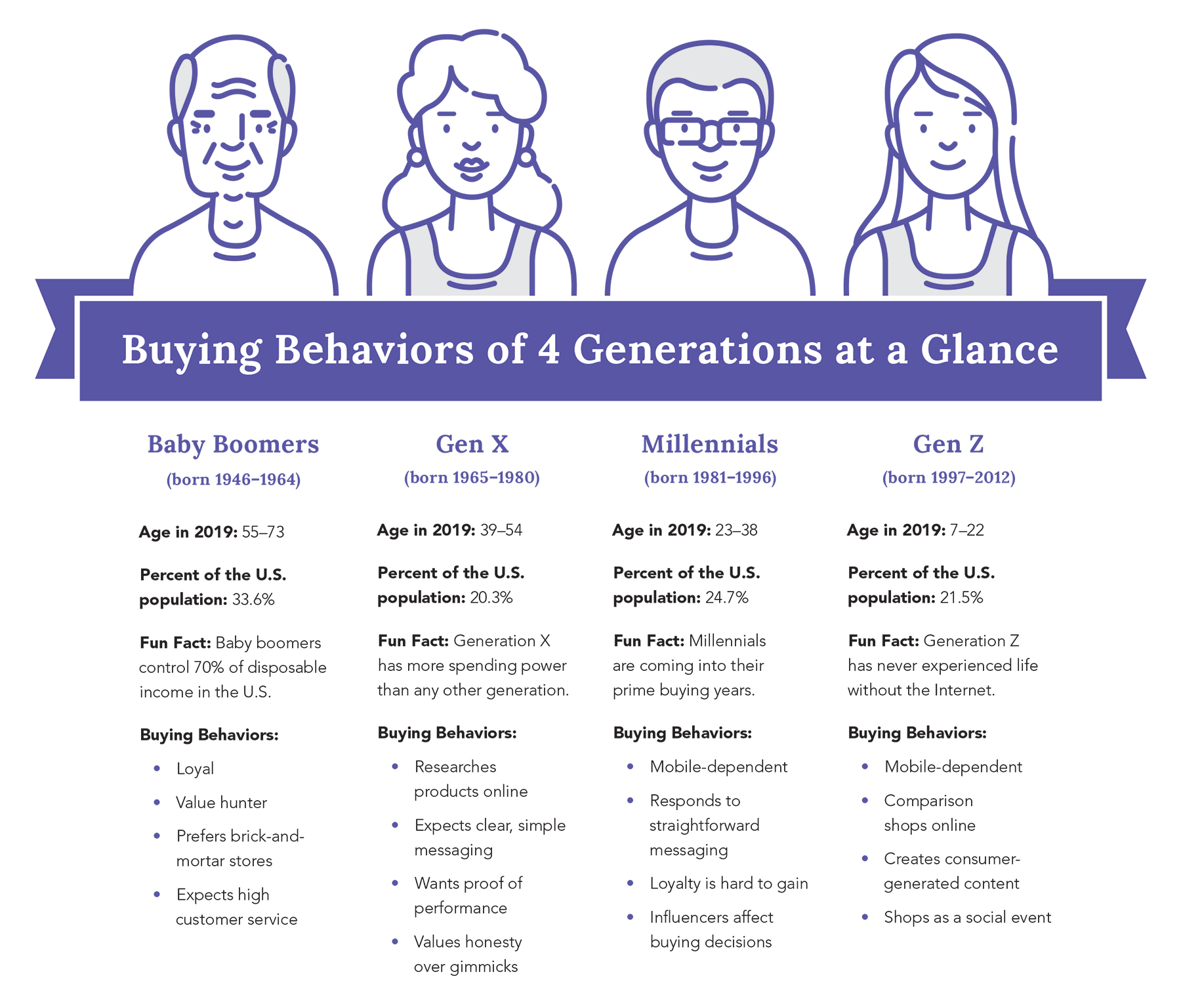People of every generation differ in the way they shop, respond to ads and use technology. With so many competing factors, how can companies market to customers in each cohort? The answer lies in Generational Marketing.
What is generational marketing?
As the name suggests, generational marketing focuses attention on each generation. Using a combination of data, shopping preferences, attitudes, and themes from a person’s upbringing, marketers are able to create tailored messages that connect with customers on a personal level.
Why is generational marketing important?
Generational marketing gives brands an edge when it comes to attracting and maintaining customers. By understanding the values of each generation, marketers and designers can create relevant campaigns.
Effective campaigns
Every customer (no matter the generation) expects relevant, meaningful content from companies. However, over half of consumers say content generated by brands is useless, according to MarketingDive. When marketers focus on generational marketing, they create more relevant content for each customer.
Going beyond digital
For generational marketing to be successful, companies have to use all avenues of communication, not just digital ones—engaging customers through everything from face-to-face meetings and direct mail marketing to social media ads and promotional emails.
Robust segmentation
Marketers assume that generational marketing requires segmenting customers by age. While age is certainly part of the equation, it’s not the entire picture. Generational marketing looks at the buying habits, traits, and shopping preferences of each generation. This kind of segmentation, which relies on both demographic and behavioral data, is an effective marketing tactic for every company.

How to get started
It takes time and effort to create generationally-focused campaigns, but the results can be dramatic.
Get to know your customers in person
Make an effort to speak with your customers face-to-face. By having conversations with customers of varying ages, you can begin to shape your generational strategy. Consider attending trade shows, host a customer appreciation event, or roam the sales floor and strike up conversations.
Start collecting data
To be effective, you need to collect customer data. The more you know about customers, the more refined and relevant your campaigns will be. You may need a platform to help manage and use data. Some helpful tools include a CRM, buyer persona templates, or Shawmut MailPlus, which combines online and offline marketing methods in one convenient platform.
Do your research
To understand the values of each generation, you’ll have to do some homework. There are plenty of resources online that can help define the values and insights of each cohort.
Craft personalized campaigns
Using data, marketers can craft campaigns and messaging that speaks to each generation. Remember, the timing of the message and the channel it is delivered on are also part of personalizing a campaign.
Measure and adjust
Make sure that your efforts are tracked and measured—not just to gauge success, but to enable quick adjustments if needed.
Generational marketing can give companies an effective path toward knowing their customers, collecting data, and creating more targeted campaigns fit for specific age groups.
This article first appeared in Tactics Magazine, Volume 9, Issue 5.








